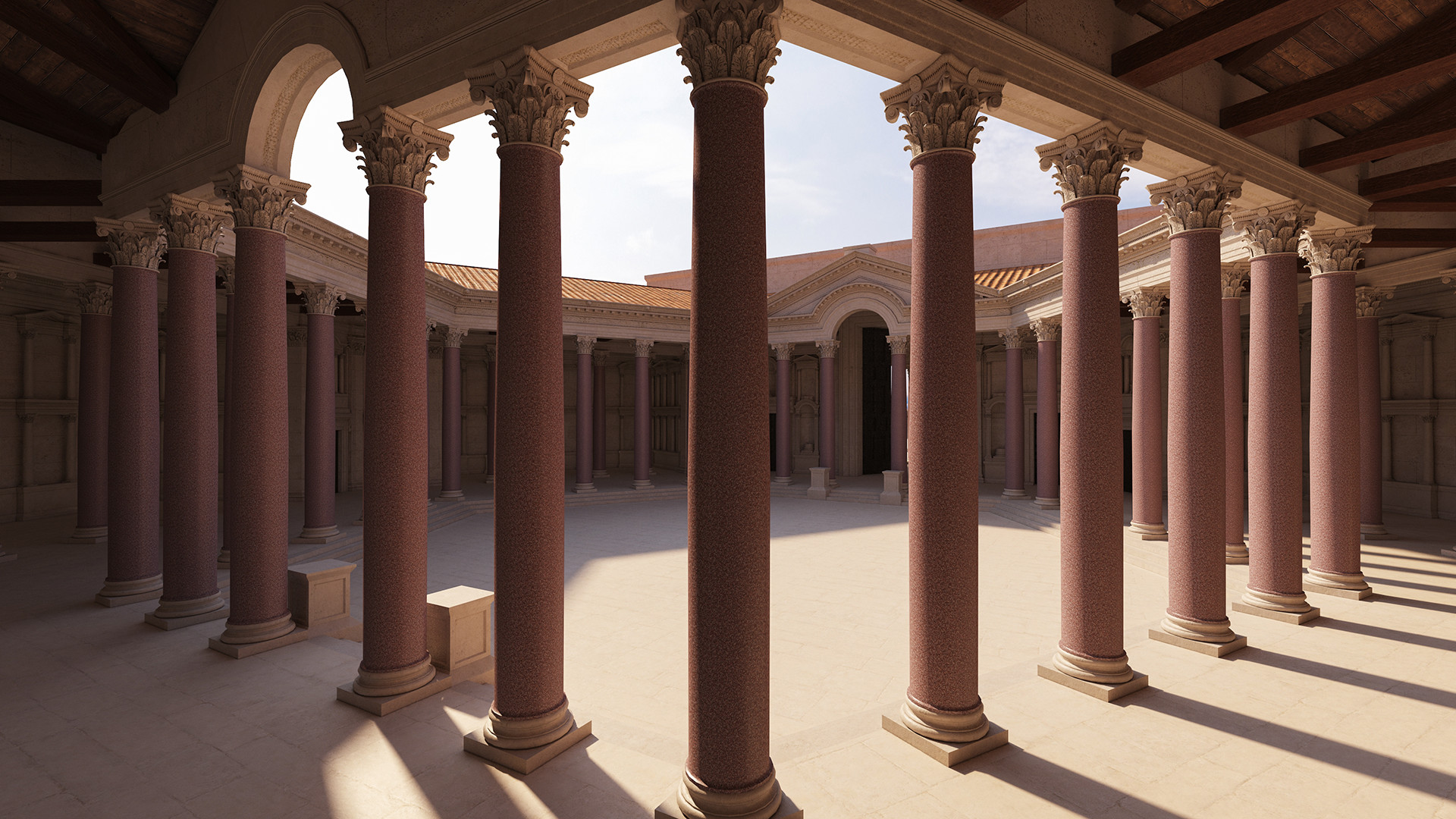Review: Baalbek Reborn: Temples
The “virtual tourism company” Flyover Zone published a (for now) free VR application called Baalbek Reborn: Temples. As a Near Eastern archaeologist and VR enthusiast, I naturally had to try it out. I did and have to say, that although it looks quiet nice, I am underwhelmed. Let’s try to figure out why.
Baalbek
So let’s start by introducing Baalbek to those who don’t know. Baalbek is a city in modern-day Lebanon and was once the Roman city of Heliopolis. It is famous for its gigantic temples made out of monumental stones, including the Temple of Jupiter, Romes biggest temple ever. Since 1984, the site is a World Heritage Site. Interestingly, the building time of the Jupiter Temple lasted at least two centuries. Some argue, that the project provided constant and reliable jobs and was therefore intentionally prolonged .

Today Baalbek is not only a site for archaeologists, but also tourists and many visit the site. But not everyone is coming to Lebanon (although they should, it is nice!). In a cooperation of the Lebanese Ministry of Culture, the German Archaeological Institute and Flyover Zone, an app was created that enables the user to have a look around the ruins and modern reconstructions.
The app
For now, you can get the app for free for Windows 10, macOS, Android, iOS, the HTC Vive, Oculus Go as well as the Oculus Rift. This is quiet impressive, but looking at their other projects, it might be, that the app will not be free forever. Flyover Zone clearly has a business and makes money with selling these apps.
The content of the app is quiet simple. You have a map in your hand and can jump in between different points of interests, which starts a multi-language guide that tells you something about what you can see. The information is extensive and quiet interesting, if you are into that stuff. You either see 360 degree views of the current site (with tourists) or you get a 360 degree view of a reconstruction. There are 35 points of interests that cover various temples within the compound.
Pros and Cons
So the reconstructions look good in a way, as they are modelled nice and have nice textures. There are also Roman people here and there, but they are not moving, so the whole place feels rather empty. Also, there is no tear and wear, so everything looks brand-new and just finished. This is a general problem with archaeological reconstructions and is not the fault of the creators of this app, but still.

To create an app like this, one has to use game engine technology. I am not sure what Flyover Zone has used, but I bet something like Unreal or Unity. Creating an app like Baalbek Reborn is (besides the work on the scans and reconstructions, the script and sound recording) actually not that difficult. If you have the data, then it is quiet straight forward putting it all together.
This is what kind of troubles me. The possibilities are more or less endless, but still the app does not utilise it. I am not sure why though. One could have easily added the possibility to walk around instead of jumping from bubble to bubble. As other projects (and the game industry) have shown, even moving protagonists are possible. So why not using a more interactive approach?

Conclusion
Don’t get me wrong: I appreciate the work that has gone into this and considering the creation of reconstructions and the post-processing of 3D scans, it is a lot of work. But the use of that data did fall rather short and could have utilised a way more interactive approach. I have seen way smaller projects doing this creatively and even my own students are more or less capable of creating these worlds like in the app (although in a much smaller scale).
To end on a good note though, I think this app is a good step into the right direction. Making these heritage sites virtually accessible is good, as these can be used in modern-day teaching, even in VR. Imagine a whole class walking and talking inside the reconstructed Baalbek to see the monuments and talk about them. This is what we need for the future.







